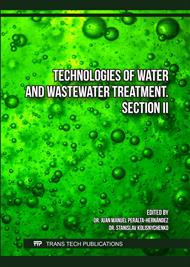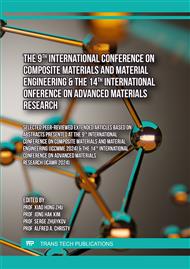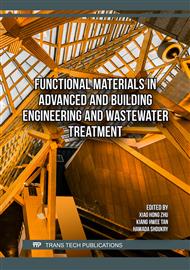p.45
p.53
p.63
p.73
p.81
p.87
p.99
p.117
p.125
Extraction of Chitosan Derived from Mushroom by Deacetylation for Wastewater Treatment
Abstract:
In this study, Volvariella vovacea (straw mushroom, SM) and Flammulina velutipes (Golden mushroom, GM) were used as a natural source of chitin. The aim of this research is to extract chitin and thus, converted into chitosan via acetylation process. The obtained chitosan was applied in the wastewater treatment process as the coagulant to improve the quality of wastewater. As these two types of mushrooms are readily available in the local area in Northeastern Thailand and relatively cheap. The chitin extraction process was obtained by firstly removing fat, minerals, protein and pigment of SM and GM using petroleum ether, HCl, NaOH and acetone respectively. Extracted chitin was deacetylated by using 50% (v/v) NaOH at 140 oC for 2 hours to convert into chitosan. The properties of extracted chitosan was examined by FT-IR and TGA. FTIR spectrum showed the peaks of C-H stretching at 2870 cm-1 , N-H2 bending at 1586 cm-1, N-H stretching at 1026 cm-1, etc. which corresponded to the standard chitosan. TGA showed the thermal decomposition which is divided into three phases. First stage of weight loss is between 50-115 °C caused by water evaporation. There was no changes of weight during a temperature of 115-268 °C. The second phase during 268-330 °C indicates a significant weight loss which is due tot he saccharide degradation of chitosan and at a temperature more than 330°C refers to the volatile organic material. As a result of TGA, it can be confirmed that the extracted chitosan from SM and GM is very similar to the standard commercial chitosan. After that, 3 g of extracted chitosan was mixed with 300 mL of deionized water and 6 mL of acetic acid was added for 24 hours to prepare the chitosan coagulant. Then, it was dropped in the separate jar which contained high TSS, COD and BOD wastewater. The results showed that chitosan biocoagulant could reduce TSS, COD and BOD by 62, 62 and 88% respectively which proved to be efficient in the use of wastewater treatment.
Info:
Periodical:
Pages:
125-130
Citation:
Online since:
July 2024
Authors:
Keywords:
Price:
Сopyright:
© 2024 Trans Tech Publications Ltd. All Rights Reserved
Share:
Citation:




